#louis and tawny
Text
For Valentine's Day, I'm drawing a cheesy valentine's meme of each of my otps and posting them throughout this month, counting down to my favorite ships leading up to the fourteenth. Decided to start off on the right foot with a series of Valentines with icons based off my favorite Disney Channel pairings! Feel free to share these with anyone you'd like, but do not repost!
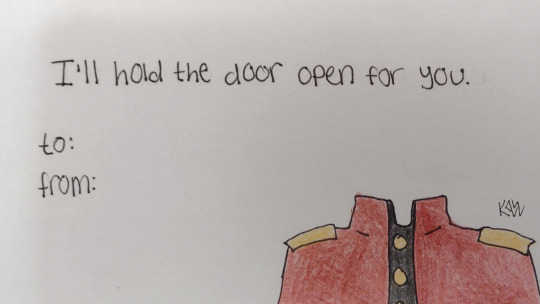



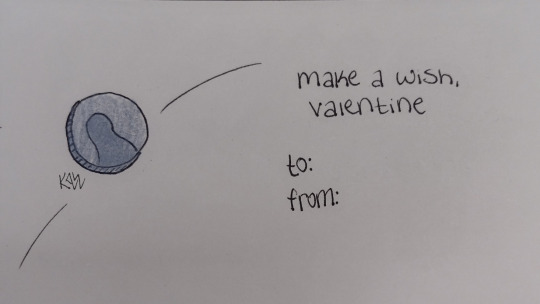
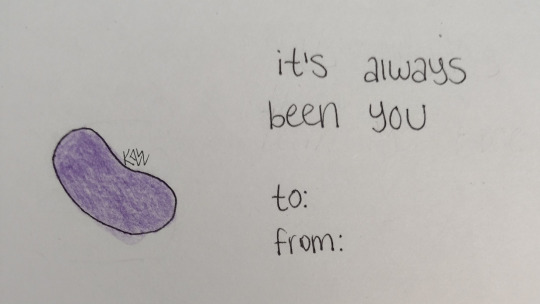
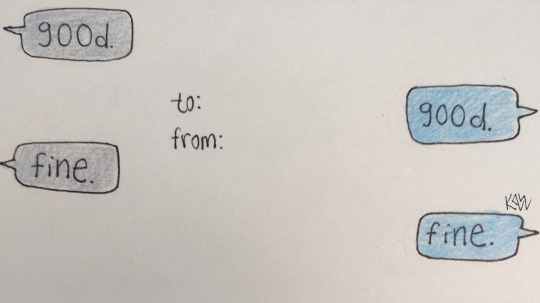
#disney channel#tessie#pheely#louis × tawny#kick#lizzie x gordo#rucas#channy#valentine's day#shipping#otp#valentines#kazzy draws#kazzy's valentines
5 notes
·
View notes
Text

Album of Abyssian Birds and Mammals. From paintings by Louis Agassiz Fuertes. 1930.
90 notes
·
View notes
Photo



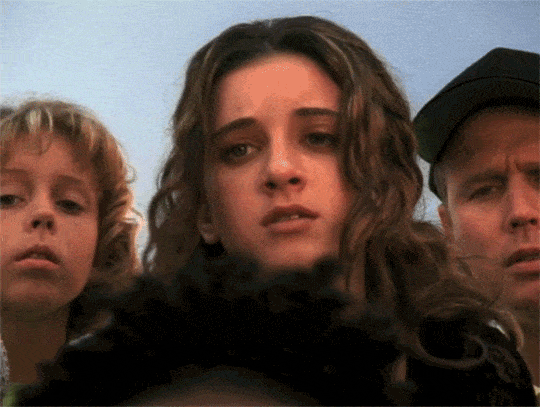
Even Stevens original pilot vs. series finale
20 notes
·
View notes
Text

Louis van der Steen - Tawny owl (1928)
269 notes
·
View notes
Text
The Essence of the Sun
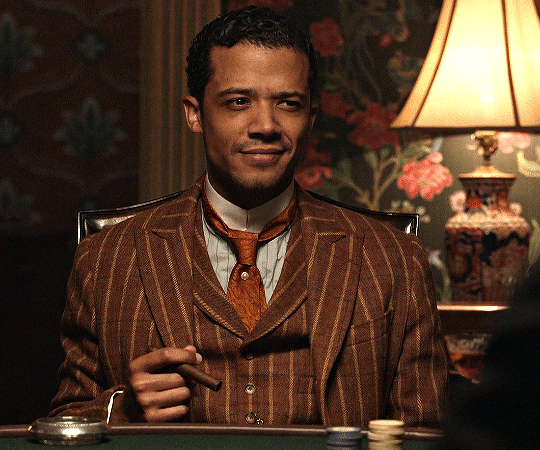
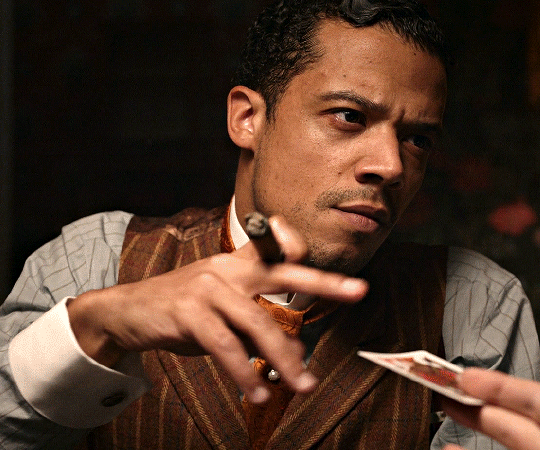

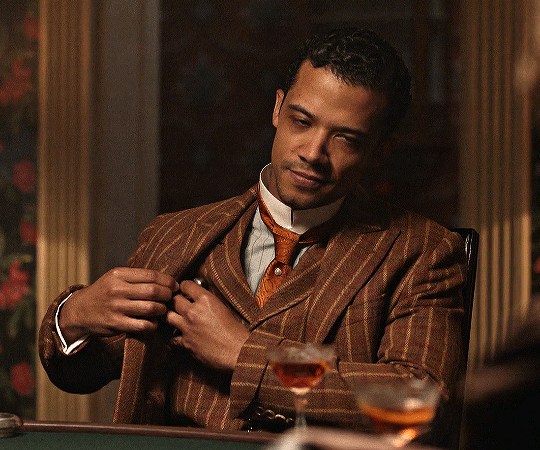
To kick off my Rewind the Tape posts, of course I'm starting with my favorite look. This dazzling russet and bronze striped suit, topped with this tawny patterned tie and tie pin caught my attention immediately. It's been almost a year and a half, and this suit continues to clog my mind. The fit of it is superb (don't get me started on how the vest fits his waist like a glove) and the color makes everything around him seem like it's put perfectly in place to make Louis look like the star of the show. Even the glass of brown liquor looks staged to compliment this man's outfit. By far, one of my favorites and it's so funny how this was only the beginning.
@iwtvfanevents
#vampterview#the titular vampire#louis de pointe du lac#jacob anderson#carol cutshall#rewind the tape
81 notes
·
View notes
Text
Pets
(Family pets and the pet they take to Hogwarts)
Potters:
Family: Dog (Mastiff) - Padfoot / Paddy
James: Ferret - Dave
Albus: Tawny Owl - Klaus
Lily: Tabby Cat - Ziggy
Teddy: Spotted Owl - Koda
Weasley-Granger:
Rose: Maine Coon Cat - Hemmy
Hugo: Toad - Flip
Weasley-Delacour:
Family: Dog (Golden Retriever)- Lisette, Maltese Cat - Claude
Vic: Singapura Cat - Bella
Dom: Eurasian Eagle Owl - Octavia
Louis: Rat - Rio
Weasley-Johnson:
Fred: Rat - Snot
Roxanne: Tawny Owl - Ozzy
Weasley-Zhào:
Molly: Ragdoll Cat - Elio
Lucy: Peterbald Cat - Silver
Longbottom:
Family: Dog (Shih Tzu) - Bono, Dog (Cockpoo)- Stevie
Alice: Snowy Owl - Nina
Frank: Toad - Angus
Malfoy:
Scorpius: Ferret - Sage
#harry potter next gen fic#harry potter next generation#hp next gen#harry potter#harry potter next gen headcanon#hp next generation#albus severus potter#james sirius potter#teddy lupin#fred weasley#victoire weasley#dominique weasley#louis weasley#albus x scorpius#scorpius malfoy#molly weasley#remus lupin#sirius black#wolfstar#severus snape#jily#slytherin#draco malfoy#sebastian sallow#marlene mckinnon#james potter#hpnextgen#hp#hp fandom#hogwarts
20 notes
·
View notes
Text
About Us
*Note: This is a fictional academy of course.
"Honing the skills of the exceptional" is our motto and we've being doing just that for years! We wish to see our students form a deep bond with Pokemon by understanding their world, along with teaching them how to survive in the professional and competitive world of Pokemon raising and training. We have the best and the brightest in order to do this.
Atlas May, the teacher of psychic, dark, and ghost types is a world renowned Pokemon researcher. Mitzi May, his wife, who teaches bug, fairy, and grass types is also world renowned for her breakout into the stylist world. Wick Sable, teacher of rock, ground, and normal types has contributed important findings when it comes to the research of Pokemon fossils. Nina McMurray, teacher of ice, water, and fire types created the first Pokemon nursery in her home city of St. Louis. Asa Sweet, whom teaches dragon, flying, and fighting types, is an expert in the business of Pokeball creation. Lastly but not least, Dominic Drago, the teacher of steel, poison, and electric types, was a part of the detective force alongside Pokemon for years before changing careers as a teacher.
What Students Can Do With A Diploma
Here are some careers our students can look forward to in the future:
Pokemon trainer
Gym Leader
Gym assistant
Pokemon Stylist
Pokemon Researcher
Pokemon Breeder
Pokemon Nurse/Caretaker
Professional Battleist
And many more!
You can find some of our students below the cut (please fill out this form if you want your OC to become a student).
Atlas Students (psychic, dark, and ghost)
Mordecai: Physic type - Espeon
Silver: Ghost type - Banette
Valentin: Dark type - Shiny poochyena
Mitzi Students (bug, fairy, and grass)
Charlotte: Fairy type - Shiny Spritzee
Dorothy: Fairy type (OC of @horsegurltrainor) - Fidough
Ivy: Grass type - Petilil
Wick Students (rock, ground, and normal)
Tawny: Ground type (oc of @deerslutsworld) - Sandshrew
Freckle: Normal type - Lillipup
Nina Students (ice, water, and fire)
Rocky: Fire type - Growlithe
Lacy: Ice type - Cubchoo
Walker: Ice type - Glaceon (oc of @floofyboi57)
Irene: Water type - Luvdisc
Asa Students (dragon, flying, and fighting)
Viktor: Fighting type - Timburr
Nico: Dragon type - Druddigon
Dominic Students (steel, poison, and electric)
Zib: Poison type - Koffing
Serafine: Poison type - Seviper
Clarence: Electric type - Jolteon
14 notes
·
View notes
Text

Beast of Gévaudan
In the mid 18th century women and children were found torn apart, dismembered, or decapitated in the quiet French province of Gévaudan. These were the first of nearly a hundred attacks perpetrated by a mysterious animal dubbed as the Beast of Gévaudan.
From 1764 to 1767, in the historical region of Gévaudan, located in southern France, and in adjacent areas, about one hundred children, youths, and women were killed by a so-called “Beast”. Numerous other humans survived the attacks, many of them seriously injured. The series of attacks has been confirmed by a great variety of historical documents and is not called into question by scientists.
Historians claim that wolves, or a hybrid of a wolf and a domestic dog, had attacked the victims; the “hybrid-assumption” is based on the description of a canid, shot in June 1767, that was said to have strange morphological characteristics. However, a critical evaluation of historical texts, including the publications of the French abbots François Fabre and Pierre Pourcher, revealed that neither this animal, nor any other wolf killed in Gévaudan, had anything to do with the attacks of the Beast.
Descriptions of the time vary, and reports may have been greatly exaggerated due to public hysteria, but the Beast was generally described as a wolf-like canine with a tall, lean frame capable of taking great strides. It had an elongated head similar to that of a greyhound, with a flattened snout, pointed ears, and a wide mouth sitting atop a broad chest. The Beast’s tail was also said to have been notably longer than a wolf’s, with a tuft at the end. The Beast’s fur was described as tawny or russet in colour but its back was streaked with black and a white heart-shaped pattern was noted on its underbelly.
About 95 percent of the carnivore attacks on humans in Gévaudan during the years 1764 to 1767 can be attributed to that single animal that was referred to as la bête: The Beast. There is no doubt that the remaining attacks were executed by rabid and non-rabid wolves. Wolves were a common species at that time and therefore easily recognized by the rural population.
The Beast of Gévaudan committed its first recorded attack in the early summer of 1764. A young woman named Marie Jeanne Valet, who was tending cattle in the Mercoire forest near the town of Langogne in the eastern part of Gévaudan, saw the Beast come at her. However, the bulls in the herd charged the Beast, keeping it at bay. They then drove it off after it attacked a second time. Shortly afterwards the first official victim of the Beast was recorded: 14-year-old Janne Boulet was killed near the village of Les Hubacs near Langogne.
Throughout the remainder of 1764, more attacks were reported across the region. Very soon terror gripped the populace because the Beast was repeatedly preying on lone men, women, and children as they tended livestock in the forests around Gévaudan. Reports note that the Beast seemed only to target the victim’s head or neck regions.
On January 12, 1765, Jacques Portefaix and seven friends were attacked by the Beast. After several attacks, they drove it away by staying grouped together. The encounter eventually came to the attention of King Louis XV, who awarded 300 livres to Portefaix and another 350 livres to be shared among his companions. The livre was the currency of Kingdom of France and its predecessor state of West Francia from 781 to 1794. The king also directed that Portefaix be educated at the state’s expense. He then decreed that the French state would help find and kill the Beast.
The killing of the creature that eventually marked the end of the attacks is credited to a local hunter named Jean Chastel, who shot it at the slopes of Mont Mouchet, now called la Sogne d’Auvers, during a hunt organized by a local nobleman, the Marquis d’Apchier, on June 19, 1767.
29 notes
·
View notes
Text

The Wrath of Achilles
By Louis Édouard Fournier
And anguish descended upon the son of Peleus and the heart in his rugged breast debated two ways, whether he should draw the sharp sword by his side and scatter the men and slay and despoil the son of Atreus, or check his anger and restrain his spirit. While he churned these things through his heart and mind, as he was drawing from its sheath his great sword, Athena came to him down from heaven; for Hera the goddess with white arms dispatched her, who in her heart loved and cared for both men alike. She came up behind and grabbed the son of Peleus’ tawny hair, appearing to him alone, and none of the others saw her. Thunderstruck, Achilles turned behind him and at once recognized Pallas Athena; for her eyes gleamed terribly.
The Iliad, Book 1, Lines 188-200
#Louis Édouard Fournier#Achilles#The Iliad#Homer#Agamemnon#Athena#greek mythology#tagamemnon#Fine Art#TSoA
18 notes
·
View notes
Photo

Beast of Gévaudan
In the mid 18th century women and children were found torn apart, dismembered, or decapitated in the quiet French province of Gévaudan. These were the first of nearly a hundred attacks perpetrated by a mysterious animal dubbed as the Beast of Gévaudan.
From 1764 to 1767, in the historical region of Gévaudan, located in southern France, and in adjacent areas, about one hundred children, youths, and women were killed by a so-called “Beast”. Numerous other humans survived the attacks, many of them seriously injured. The series of attacks has been confirmed by a great variety of historical documents and is not called into question by scientists.
Historians claim that wolves, or a hybrid of a wolf and a domestic dog, had attacked the victims; the “hybrid-assumption” is based on the description of a canid, shot in June 1767, that was said to have strange morphological characteristics. However, a critical evaluation of historical texts, including the publications of the French abbots François Fabre and Pierre Pourcher, revealed that neither this animal, nor any other wolf killed in Gévaudan, had anything to do with the attacks of the Beast.
Descriptions of the time vary, and reports may have been greatly exaggerated due to public hysteria, but the Beast was generally described as a wolf-like canine with a tall, lean frame capable of taking great strides. It had an elongated head similar to that of a greyhound, with a flattened snout, pointed ears, and a wide mouth sitting atop a broad chest. The Beast’s tail was also said to have been notably longer than a wolf’s, with a tuft at the end. The Beast’s fur was described as tawny or russet in colour but its back was streaked with black and a white heart-shaped pattern was noted on its underbelly.
About 95 percent of the carnivore attacks on humans in Gévaudan during the years 1764 to 1767 can be attributed to that single animal that was referred to as la bête: The Beast. There is no doubt that the remaining attacks were executed by rabid and non-rabid wolves. Wolves were a common species at that time and therefore easily recognized by the rural population.
The Beast of Gévaudan committed its first recorded attack in the early summer of 1764. A young woman named Marie Jeanne Valet, who was tending cattle in the Mercoire forest near the town of Langogne in the eastern part of Gévaudan, saw the Beast come at her. However, the bulls in the herd charged the Beast, keeping it at bay. They then drove it off after it attacked a second time. Shortly afterwards the first official victim of the Beast was recorded: 14-year-old Janne Boulet was killed near the village of Les Hubacs near Langogne.
Throughout the remainder of 1764, more attacks were reported across the region. Very soon terror gripped the populace because the Beast was repeatedly preying on lone men, women, and children as they tended livestock in the forests around Gévaudan. Reports note that the Beast seemed only to target the victim’s head or neck regions.
On January 12, 1765, Jacques Portefaix and seven friends were attacked by the Beast. After several attacks, they drove it away by staying grouped together. The encounter eventually came to the attention of King Louis XV, who awarded 300 livres to Portefaix and another 350 livres to be shared among his companions. The livre was the currency of Kingdom of France and its predecessor state of West Francia from 781 to 1794. The king also directed that Portefaix be educated at the state’s expense. He then decreed that the French state would help find and kill the Beast.
The killing of the creature that eventually marked the end of the attacks is credited to a local hunter named Jean Chastel, who shot it at the slopes of Mont Mouchet, now called la Sogne d’Auvers, during a hunt organized by a local nobleman, the Marquis d’Apchier, on June 19, 1767.
64 notes
·
View notes
Text
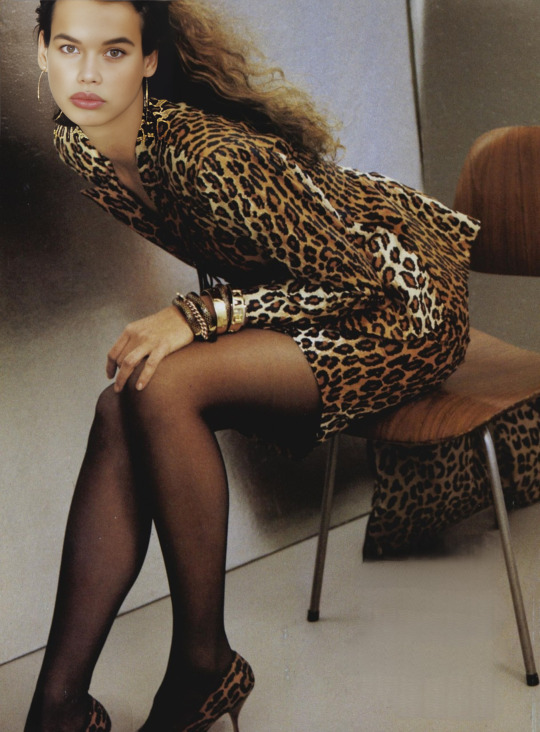
US Vogue March 1989
FALSE WILD
Robyn Mackintosh in a Patrick Kelly catsuit even has a lace-up front. Cotton chintz jacket and matching skirt. A tawny eyeshadow: Yves Saint Laurent Sunny Copper Golden Sunlight #69 Eyeshadow Powder Duo, earrings, M +J Savitt, gold bracelets, Karl Lagerfeld Jewelry, watch, Time Will Tell, tights, Donna Karan, leopard print pumps, Maud Frizon. Fashion editor, Grace Coddington. Hairstyle, Didier Malige for Jean Louis David, makeup, Andrea Paoletti.
FAUX SAUVAGE
Robyn Mackintosh dans un ensemble de chat de Patrick Kelly possède même un lacet sur le devant. Veste en chintz de coton et jupe assortie. Un fard à paupières fauve : Duo de poudres d'ombres à paupières Sunny Copper Golden Sunlight #69 d'Yves Saint Laurent, boucles d'oreilles, M +J Savitt, bracelets en or, Karl Lagerfeld Bijoux, montre, Time Will Tell, collants, Donna Karan, escarpins imprimé léopard, Maud Frizon. Rédactrice de mode, Grace Coddington. Coiffure, Didier Malige pour Jean Louis David, maquillage, Andrea Paoletti.
Photo Sheila Metzner
vogue archive
#us vogue#march 1989#fashion 80s#spring/summer#printemps'été#patrick kelly#robyn mackintosh#yves saint laurent#karl lagerfeld#donna karan#grace coddington#andrea paoletti#sheila metzner#maud frizon#vintage vogue#vintage fashion
6 notes
·
View notes
Photo


What 'Caucasian' means
Why do people in the US and UK (unlike in most of Europe) refer to European people as Caucasian?
The term "Caucasian" was introduced by the German anthropologist Johann Friedrich Blumenbach, who was busy measuring skulls in Georgia in the 19th century, and for no good reason decided that the Caucasus was the birthplace of mankind. He made division of Aryan, Semitic (Jews) and Hamitic (north Africans), just as it was written in Genesis.
We Europeans did not, of course, wish to be seen as having racial connections with Jews or Africans, and German Nazi extermination policies gave the term "Aryan" a bad name.
Blumenbach's theories have long been discounted in modern anthropology, yet his term lives on. This classification of white non-Jewish European was adopted by US immigration control, who needed to keep a check on the races coming in that were not black, brown or Jewish. "Caucasian" is just an illogical yet convenient category, and so it lives on, whenever we have to fill in an identity form: even if it is just an online dating site.
David Bye, Göd, Hungary
Whites tan to get brown, but naturally brown people stay out of the sun if they can in order to get whiter. Now "white" is a term of abuse, and "Caucasian" is a more innocuous way to describe us.
The paradigm of the “typically Jewish” nose originates in the craniological studies of Johann Friedrich Blumenbach (1752–1840). Blumenbach claimed to have evidence that Jews had an especially prominent nasal bone. Der Giftpilz (The Poisonous Mushroom), a Nazi schoolbook published by the Stürmer Verlag in 1938, provides an example of how such anti-Semitic clichés about body shapes were spread. It was printed in a first edition of 60,000 copies.

Blumenbach assumed that all morphological differences between the varieties were induced by the climate and the way of living and he emphasized that the differences in morphology were so small, gradual and transiently connected that it was not possible to separate these varieties clearly.
Although Blumenbach did not propose any hierarchy among the five varieties, he placed the Caucasian form in the center of his description as being the most "primitive" or "primeval" one from which the other forms "degenerated".
In the 18th century, however, these terms did not have the negative connotations they possess today.
At the time, "primitive" or "primeval" described the ancestral form, while "degeneration" was understood to be the process of change leading to a variety adapted to a new environment by being exposed to a different climate and diet.
Hence, he argued that physical characteristics like skin color, cranial profile, etc., depended on geography, diet, and mannerism. Further anatomical study led him to the conclusion that 'individual Africans differ as much, or even more, from other Africans as from Europeans'.
Like other monogenists such as Georges-Louis Leclerc, Comte de Buffon, Blumenbach held to the "degenerative hypothesis" of racial origins.
Blumenbach claimed that Adam and Eve were Caucasian inhabitants of Asia, and that other races came about by degeneration from environmental factors such as the sun and poor diet.
Thus, he claimed, Negroid pigmentation arose because of the result of the heat of the tropical sun, while the cold wind caused the tawny colour of the Eskimos, and the Chinese were fair-skinned compared to the other Asian stocks because they kept mostly in towns protected from environmental factors.
He believed that the degeneration could be reversed in a proper environmental control and that all contemporary forms of man could revert to the original Caucasian race.
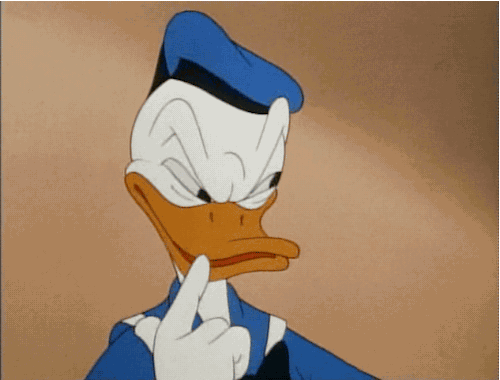
Blumenbach was regarded as a leading light of German science by his contemporaries. Kant and Friedrich Schelling both called him "one of the most profound biological theorists of the modern era.
In the words of science historian Peter Watson, "roughly half the German biologists during the early nineteenth century studied under him or were inspired by him:
#johann blumenbach#pigmentation#kemetic dreams#german#nazi#nazis#caucasian#negroid#chinese#eskimos#inuit#asia#blumenbach#adam and eve#asian#african#africans#racism#scientific racism#european#europeans#european history#dutchland#deutschland
11 notes
·
View notes
Text


Even Stevens original pilot vs. 3x01 "The Kiss"
9 notes
·
View notes
Text
Lily-Luna Potter Headcanons 🍊

Full Name: Lily-Luna Potter
Date of Birth: October 16th, 2007
Gender & Pronouns: Female, She/Her
Sexuality: Panromantic Pansexual
Place of Birth: Potter's Manor, Devon, England
Height: 5'3"
Hogwarts House: Hufflepuff
Zodiac Sign: Libra
MBTI Type: ENFP
Appearance:
- Hazel coloured eyes
- Glasses: Thin, silver framed, circular glasses with patterns on them. She often forgets or chooses not to wear them (though she definitely needs them)
- Straight, auburn hair
- Light freckles on her face, mostly around her nose
- Pale-tan skin, she tans very easily in the sun too
Interests:
♡ Quidditch
♡ Painting
♡ Animals
♡ Plants
♡ Retro fashion
Dislikes:
× Confrontation
× Feeling overwhelmed
× The Daily Prophet
× Prejudice
× Feeling homesick
Magic:
Wand - Pear Wood, 10 inches, Unicorn Hair core, Pliant
Patronus - Snowy Owl
Boggart - Working a stuffy office job
Armotentia - Broom polish, the smell of hot waffles with butter, sun dried grass
Expertise - Charms, Nature magic (Herbology & Magical creatures)
Favourites:
Music ♡ beabadoobee
Colour ♡ Fern Green
Animal ♡ Capybara, Kneazle
Plant ♡ Sunflowers, Flitterbloom
Person ♡ Harry Potter (father)
Food ♡ Sweet Waffles
Subject ♡ Charms, Herbology
Extra:
- Hufflepuff seeker for the Quidditch team from her third year onwards
- Dyslexic and ADHD. Lily is tutored by an older student (Arabella Chang, my OC) to help organise, study and to work on her school assignments
- She rescues injured animals and fosters them, but has 3 permanent pets. One is Howard the hedgehog, who she takes with her to Hogwarts, and the other two are Marmalade (a ginger and white maine coone cat) and Fletcher (a tawny owl)
- The reason she takes Howard with her rather than a standard pet, is because he needs more care than her other two pets
- Her godparents are Bill and Fleur Weasley, partially because she is the same age as Louis and also because she spends a lot of time at Shell Cottage
- She changes her hair style and length often, and has had very short hair (pixie cut) and very long hair (waist length) over the years
- Her close friends include Lorcan and Lysander Scamander, Everett 'Eve' Nott (OC), Maisy MacCallan (OC) and Matilda 'Tilly' Longbottom (OC)
- Helps Hagrid with the animals after class or volunteers in the greenhouses with Professor Longbottom
- Closer with Albus than James and Teddy, though it doesn't seem like it at a first glance since Lily banters with her older brothers a lot more
- She knows some British Sign Language
- Lily wants to either be a freelance artist, own a magical plant shop or work with healing charms after Hogwarts
- Her childhood nicknames were Lilu and Lily-bug
4 notes
·
View notes
Text
I have had this in my head nonstop so I think I just need to get it out there so I can stop being haunted by it :
it is present day and Armand and Louis have decided to treat themselves to a night out at a gay cowboy bar in Colorado. this place has everything : kitschy western paintings, red velvet curtains and wall hangings slightly past their prime, strings of twinkly lights, soft golden lighting, a vintage jukebox. Louis looks across the room to the bar from their corner table. There is a huge crowd of beautiful young men chatting happily, dancing, drinking, so it's hard to pick out any one person. But there is a blonde at the bar who has caught Louis' eye. His back is turned, but he has slight but strong shoulders and an exquisite pale neck. He is wearing a tawny brown Stetson and a cream-colored embroidered Western shirt with a design of hummingbirds across the shoulders; it's quite beautiful; the birds are feeding from pink horsemint flowers which extend down the back of the shirt. There are more flowers along the sleeves. Time slows as the man turns around. Our view of him is occasionally interrupted by passing bar patrons, but soon we get a good look. It's Lestat de Lioncourt. Roses are Falling by Orville Peck starts to play. Cut to black. credits
#iwtv#interview with the vampire#lestat de lioncourt#louis de pointe du lac#the vampire armand#orville peck#I have a brain disease#iwtv amc
9 notes
·
View notes
Text
Hushed in the smoky haze of summer sunset,
When I came home again from far-off places,
How many times I saw my western city
Dream by her river.
Then for an hour the water wore a mantle
Of tawny gold and mauve and misted turquoise
Under the tall and darkened arches bearing
Gray, high-flung bridges.
Against the sunset, water-towers and steeples
Flickered with fire up the slope to westward,
And old warehouses poured their purple shadows
Across the levee.
High over them the black train swept with thunder,
Cleaving the city, leaving far beneath it
Wharf-boats moored beside the old side-wheelers
Resting in twilight.
Sunset: St. Louis by Sara Teasdale
3 notes
·
View notes